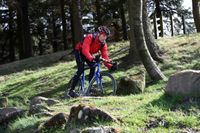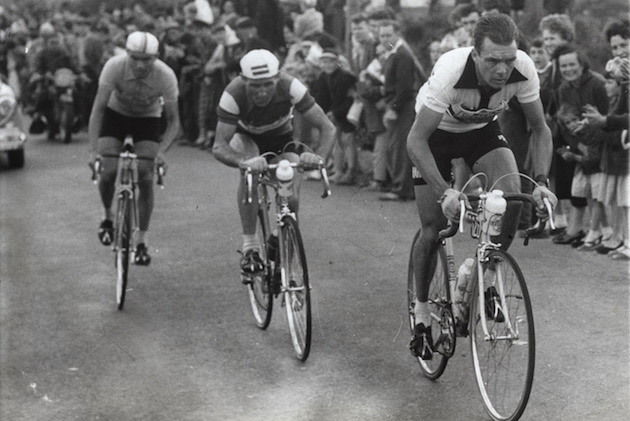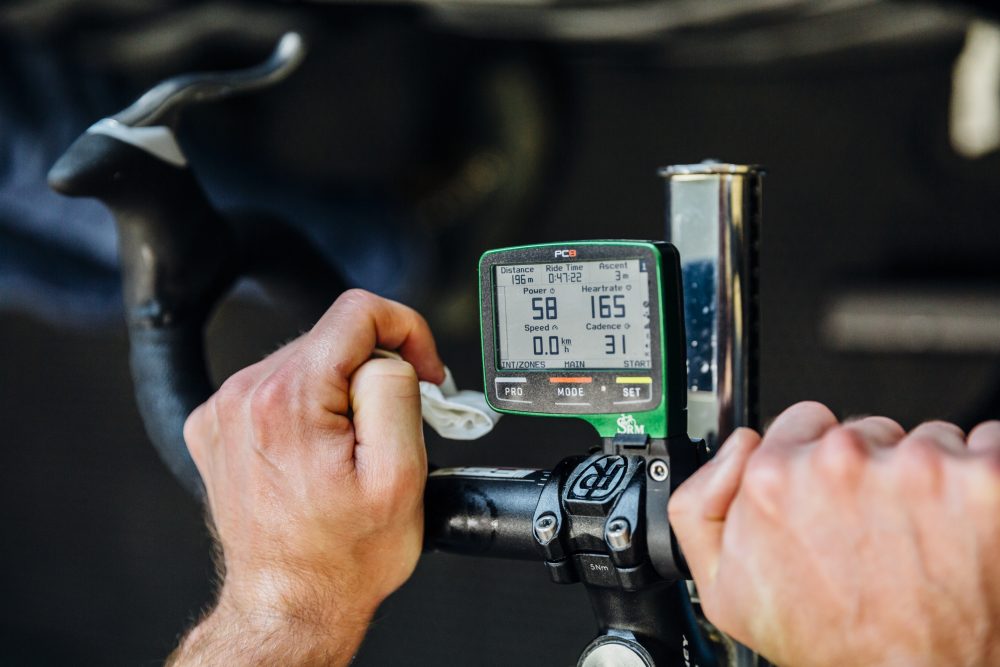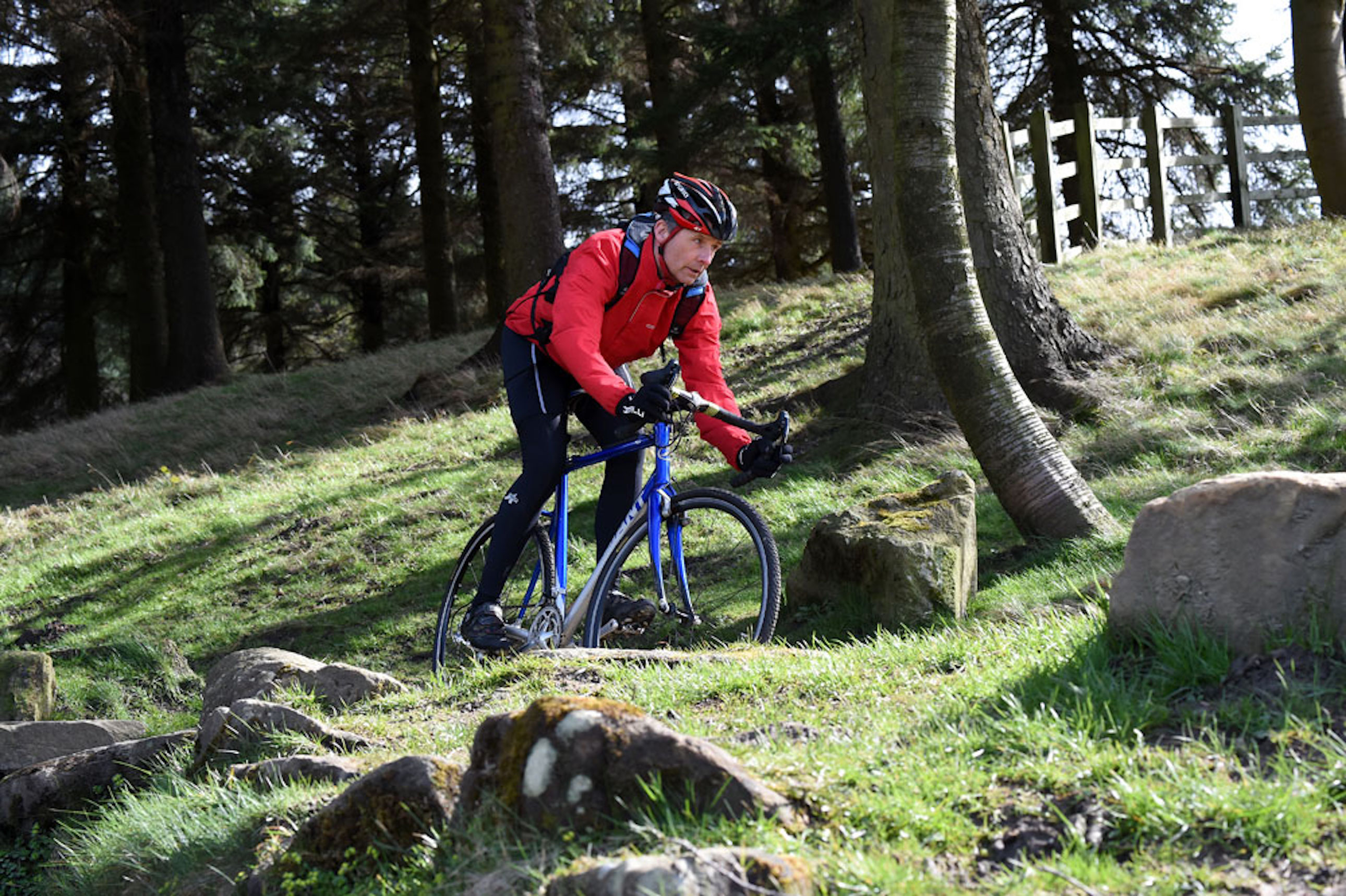From monster mileage to power meters: how training has changed through the decades
Imagine riding without GPS... without power... even without heart rate. How did they cope, and how greatly has training really advanced?

Sports psychology, expert coaches, scientists, physiological testing, nutrition, and the means to quantify training effort and dose: each of these factors has played a part in changing the way cyclists train. But how much has training really improved? One thing that has always worked and which remains just as important today is ‘putting the miles in’.
Riding plenty of miles was the guiding principle during the Forties, and it’s still recommended today. Setting aside the controversies surrounding his time as technical director of British Cycling, Shane Sutton knows about training, and he has a universal piece of advice: “Train for 16 hours a week, every week. It doesn’t matter how you do those 16 hours, but you will get better.” Is it really that simple?
>>> How they used to train: Eddy Merckx's pre-1969 Tour de France week
High mileage remains a hallmark of elite cyclists’ training. What makes it so effective? Studies show that training volume has a direct effect on the physiological adaptations that underpin fitness. These include increases in blood volume and total number of red blood cells, increased cardiac output, and increases in blood capillary and mitochondria density in muscles. Doing lots of miles leads to lots of adaptations; it’s a blunt instrument, but it works.
A few cyclists began experimenting with more efficient ways of training during the era of Fausto Coppi. He was the top dog during the late Forties and early Fifties, and although his overall training advice, “Ride your bike, ride your bike, ride your bike” was traditional — and a tad repetitive — he experimented with pushing harder on parts of rides to simulate race efforts.

Cyclists were late to the game. At least a decade earlier, distance runners had twigged that improving performance wasn’t solely about doing more miles. Swedish athletes began to dominate, thanks to using a method called fartlek, meaning ‘speed play’ — varying the pace and including bursts of fast running.
Then an Austrian athletics coach, Franz Stampfl, developed interval training, which quickly gained traction. Roger Bannister broke the four-minute mile in 1954 having used interval training, and likewise Czech legend Emil Zatopek, the 1952 Olympic triple gold medallist (5,000 metres, 10,000 metres and the marathon), was a devotee.
The latest race content, interviews, features, reviews and expert buying guides, direct to your inbox!
>>> Interval training: An essential guide for cycling performance
Cyclists were slow to adopt interval training, but in a certain sense they were already doing it. European racers competed a lot, and racing unavoidably involves lots of interval-intensity efforts. In the UK, there was chaingang training, where each rider in a group takes a turn to set the pace at the front of a line of riders, before dropping back, recovering in the wheels then repeating the effort at the front. That’s interval training too.
During the Sixties and Seventies, most pro road racers were too busy racing to do much training. Britain’s Barry Hoban, a Tour de France stage and Classic winner, says: “We only really trained in January. We raced from February until October, and I would do some six-days until the end of November. I took a month off, then trained every day through January.”
No time to train
The packed racing schedule and scarcity of recovery days is astonishing.
“We’d go to the south of France in February, where there’d be three races a week, and we did group rides in between. We did all the Classics, the one-week stage races, then the Tour de France, then the after-Tour criteriums, and carried on until the Tour of Lombardy [Il Lombardia] in October. There was no time to train.”
We now know that the most effective training involves controlling the dose of effort in any given session, gradually increasing subsequent doses, with adequate recovery time in between, as this stimulates progression. You can’t do that in a race, as you can’t control how it unfolds, but the pros of Hoban’s generation had to race a lot to make money. Even so, the best among them understood the need for control when building for a big target race, when they would take time out to train.
The first rider to win five Tours de France, Jacques Anquetil, did specific training for big time trials. His coach wrote schedules covering the two weeks up to a race. They consisted of general riding and specific time trial efforts, often done behind a Derny pace bike, and no racing.
"Putting in the miles" and regular chaingangs persisted for quite some time in Britain, despite interval training being pushed in magazines. In May 1965 the French journalist and Paris-Nice winner Jean Bobet wrote an article about interval training for Sporting Cyclist magazine. The session he suggested was 12 sets of two-kilometre intervals ridden at 40kph, with one kilometre in between at 30kph.
Many riders, even those at the top, didn’t have time for such a structured approach, as they had to fit in training around full-time jobs. They just rode hard during whatever little training time they had. The dentist Ian Hallam took bronze medals in the 1972 and 1976 Olympic team pursuits by training on his daily bike commute: “Riding to work and back as fast as I could,” as he remembers it.
The big miles method
Few riders were coached in the way coaching happens today. They determined their own training, and they took the Shane Sutton approach: when in doubt, do more miles. Hard miles mostly, too.
Time triallist Mick Bradshaw says, “I did a regular 10-hour night-shift, so from January 1 each year, I got up at 4pm, was out at 6pm, did 60 to 70 miles, and was through the factory gates at 9am. I rode home in the morning, slept until 4pm and repeated that, Monday to Thursday.”
Bradshaw would keep to that schedule during the season, adding racing at the weekend.
“That’s how I did my whole racing career,” he says. “Later I worked in the daytime, but I still did 70 miles in three hours every night after work. I loved the feeling of pushing hard. I still do. And all my training was done on two gears, 42x15 in the winter and 42x14 in the summer. It tricked my brain into thinking my 57x12 race gear was lower than it was.”
National 50-mile champion in 1988 and winner of hundreds of open events, he was “doing 400 to 450 miles a week”. Was it the best way to train, looking back?
>>> Five invaluable tips to help you step up from riding 60 to 100 miles
“It’s the only way I know. I explained that to somebody in my club recently. He tried it and it worked. Having said that, I’d like to try the new methods they use today.”
Darryl Webster was a very good road racer and a multiple national champion on the track, in time trials and in hill-climbs. His approach was slightly more scientific than Bradshaw’s, reflecting developments in understanding. Webster’s Eighties training schedule was still self-made but influenced by a book informed by a fair amount of science: the Italian Cycling Federation’s training manual, Agonistic Cycling.
This is how Webster summarises his programme: “Starting Christmas Day, I did 40 miles every day for two weeks, alternating flat-out and tempo riding, always in a 42x16 gear.
“After that, I added long group rides, four to six hours, on Wednesdays and Sundays. I did weights twice per week, circuit training once, and sit-ups and press-ups on the other days. If the weather prevented road riding, I did a half-hour run then 20 minutes on rollers.”

Racing started early, well before the first buds of spring.
“My first race would be in February, then I took a week off. I would gradually increase my miles after that until I did an overload of 1,400 to 1,600 miles in two weeks, which promoted super-compensation. Then I went back to 40 miles a day, a mid-week long ride, and racing at weekends. Throw in some motor pacing and three-minute intervals, and that was it.”
Webster may have been winning on monster mileage, but meanwhile developments in understanding and a technological breakthrough coincided to revolutionise training. It was the start of change that saw coaches, scientists and doctors become much more important.
Many riders and coaches understood intuitively that athletes could sustain a constant, fairly hard pace for one hour, and that training for shorter intervals at that pace increased performance. The pace was the anaerobic threshold, and it was properly identified in 1979 by an Italian professor, Francesco Conconi, who related blood lactate levels to performance and heart rate. The technological breakthrough was portable heart rate monitors, which enabled coaches to quantify training intensities by heart rate.
Monitoring progress
Aldo Sassi studied under Conconi and later became a highly respected coach, but for him heart rate monitors were only a step in increasing the precision of training. “Heart rate varies under different circumstances, both in the same person and in response to the same exercise stimulus, so heart-rate monitors helped, but accuracy only came with the next breakthrough in technology, and that was the power meter.”
The American coach Hunter Allen has huge experience using power meters, and with Andrew Coggan wrote the seminal Training and Racing with a Power Meter. Allen believes that power meters made the biggest change ever to training, and certainly to coaching.
>>> Is heart rate training still relevant in the age of the power meter?
“With power meters we can quantify with total accuracy the training being done. Consequently we understand how training load impacts upon fitness, and can ensure that the individual is improving in the physiological zone targeted by a particular training session. It means we can plan ‘form’ for athletes when they want it, instead of guessing what to do and hoping it works.”
The power meter was the big game-changer. The old insurance policy of doing miles for strength, stamina and basic fitness, then using races as specific training, has been superseded. Power meters give total control over training doses and monitoring fitness, far more precisely than racing.
Power is knowledge

Top riders nowadays race far less. Racing worked but it was a scattergun approach, never a reliable way to reach peak form. The new approach uses doses of training, measured accurately by power output, to create the specific physiological changes required to peak for a race.
Coaches now have more knowledge and thus more power. Many of the leading riders know far less about their training than their predecessors did; the coach is the knowledge centre.
The understanding of human physiology continues apace, and today’s cutting-edge training is beginning to apply expertise in gene expression: individually tailoring sessions and diet to stimulate particular gene responses. This allows targeting of a specific response such as power at anaerobic threshold or fat metabolism at a given intensity.
>>> Power meters: Everything you need to know
Training has also become more holistic, with almost all top racers doing off-the-bike strength and conditioning work. This is designed to eradicate weaknesses, increase muscular strength and power, or improve the kinetic chain — optimal firing of muscle fibres required to produce power efficiently.
Naturally, the most advanced methods remain the preserve of highly qualified coaches using expensive, specialised equipment. As you wait for the new tech and breakthroughs to trickle through, rest assured, the old approach still works: get the miles in, get fit, and have fun.

Chris has written thousands of articles for magazines, newspapers and websites throughout the world. He’s written 25 books about all aspects of cycling in multiple editions and translations into at least 25
different languages. He’s currently building his own publishing business with Cycling Legends Books, Cycling Legends Events, cyclinglegends.co.uk, and the Cycling Legends Podcast